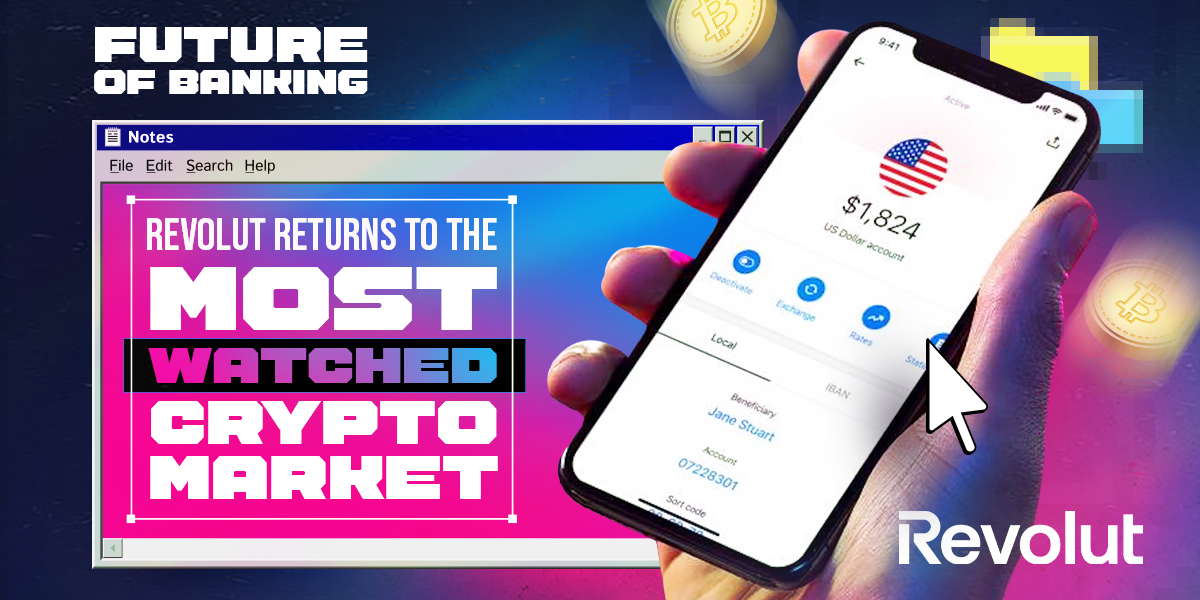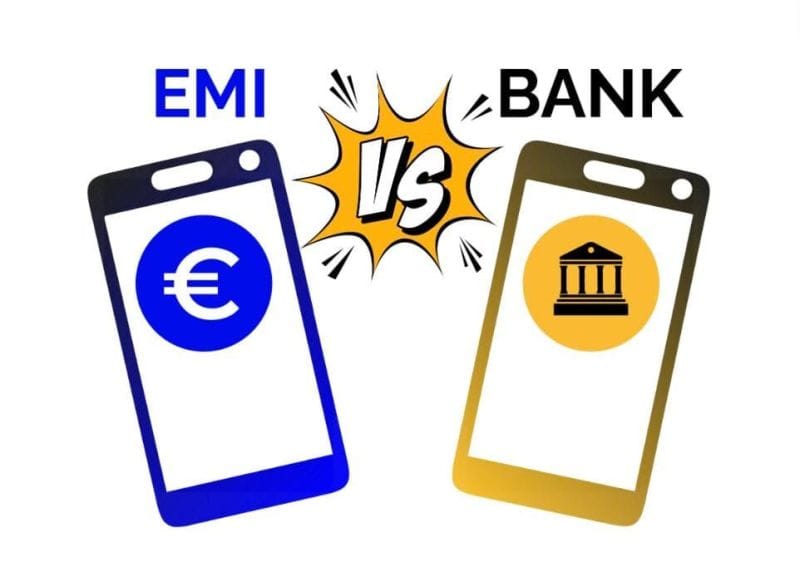Revolut to Bring Back Bitcoin and Ethereum in the U.S.

Hey Digital Banking Fanatic!
Revolut is preparing to relaunch its cryptocurrency services in the United States, about two years after suspending operations in the market. The company confirmed the return during Stablecon, signaling a renewed commitment to the Decentralized Finance (DeFi) space.
Speaking at the event, Mazen ElJundi, Global Head of Crypto at Revolut, announced that the company would reintroduce crypto offerings in the U.S. “very, very soon.” The rollout is expected to begin with Bitcoin and Ethereum, though the full list of supported assets has yet to be shared.
The company originally halted its U.S. crypto operations in October 2023, in partnership with its then-banking partner, Metropolitan Commercial Bank. The decision came amid growing regulatory pressure and enforcement actions against digital asset platforms by U.S. authorities.
At the time, the company cited the “evolving regulatory environment and uncertainties around the crypto market” as key reasons for the suspension.
Now, the U.S. becomes the 38th country where Revolut offers crypto services (rejoining the list after a nearly 2-year pause). Which market do you think will be next?
Read all the other Digital Banking industry news below 👇 and I'll be back with more tomorrow!
Cheers,
NEWS
🇪🇸 José Luis Calderón, CEO of PagoNxt Payments, offers crucial insights in Payment Expert. José Luis explores why there's still resistance to real-time payment adoption among leading financial institutions, and why failing to implement their convenience risks them falling behind next-generation FinTechs and neobanks.
🇺🇸 Revolut to relaunch cryptocurrency services in the U.S. The relaunch underscores Revolut’s strategic emphasis on expanding its presence in the burgeoning decentralized finance (DeFi) sector, aligning with a broader industry trend toward integrated financial ecosystems.
🇦🇷 Mercado Libre launches new episode of CFO perspectives, featuring Martin de los Santos reflecting on Q1’2025 highlights. The company reported impressive growth metrics, with buyer count increasing 25% YoY to 67 million in Q1. The FinTech segment showed strong performance with Monthly Active Users growing 31% YoY to 64 million, marking the sixth consecutive quarter of over 30% growth.
🇨🇦 KOHO Diversifies Product lineup with launch of international money transfers. This launch followed KOHO’s 2024 $190 million funding round toward helping the company move closer to obtaining a Schedule 1 bank license. Keep reading
🇺🇸 Plaid expands business banking data coverage in the US market. The company has launched Transactions for Business, a data processing solution designed to help FinTech companies build financial management tools for small businesses.
🇺🇸 The Chime IPO: What Investors Should Know About Its $31 a Share Private Market Valuation and More. In this article, Luisa Beltran breaks down what investors should know about Chime’s upcoming IPO. Access the full article here
🇺🇸 Banks replace passwords with QR codes for security. Financial institutions are offering new options to traditional passwords to enhance security and sign-in experiences, and clients are opting in. The global cost of fraud and cybercrime is projected to reach $10.5 trillion in 2025.
🇮🇹 Bank of Italy Chief Fabio Panetta urges EU to launch digital Euro. Panetta argued that only a central bank–issued digital currency could offer the trust, resilience, and transparency needed to support digital payments in an era of globalized cryptocurrency finance.
🇨🇳 PAObank appoints Mr. Ronald Iu as Chief Executive and Executive Director. Mr. Iu will lead the management team of PAObank to further leverage advanced financial technology, expanding its presence in small and medium-sized enterprises ("SMEs") and retail banking, thereby creating greater value for their customers.
🇺🇸 Building on Bedrock: a practical guide to core & ledger choices in embedded banking. In this practical, plainspoken field manual, Ingo‘s CPO Lisa McFarland walks you through the real-world decisions product leaders and bank execs make when faced with modern embedded banking demands. Download here
GOLDEN NUGGET
What's the difference between an 𝗘𝗠𝗜 𝗟𝗶𝗰𝗲𝗻𝘀𝗲 and a 𝗕𝗮𝗻𝗸𝗶𝗻𝗴 𝗟𝗶𝗰𝗲𝗻𝘀𝗲?

Let’s dive in:
Electronic Money Institutions (EMIs), entities authorized to issue and manage electronic money, operate in a sphere that, while similar, is distinct from traditional banks.
𝗘-𝗠𝗼𝗻𝗲𝘆 & 𝗘𝗠𝗜𝘀 𝗘𝘅𝗽𝗹𝗮𝗶𝗻𝗲𝗱:
E-money, essentially digitized cash, is appreciated for its multipurpose convenience, enabling transactions via digital records, prepaid cards, and e-wallets.
EMIs, regulated entities licensed to manage e-money, engage in various financial activities such as:
✔️ Issuance, distribution, and redemption of e-money
✔️ Provision of services that enable transactions with e-money, such as withdrawing cash from a payment account, transferring funds to third parties, and remittance delivery
✔️ Issuance of payment cards that allow withdrawing and depositing cash.
✔️ Providing information about accounts
Key products offered by EMIs include:
☑️ Virtual IBAN accounts (personal and business)
☑️ Merchant accounts
☑️ Physical or virtual payment cards (debit, prepaid, corporate, travel, gift)
☑️ E-wallets
☑️ Cryptocurrency services
☑️ Money transfers and foreign currency exchange services
☑️ BIN sponsorship
There are currently 660+ authorised EMIs in Europe:
Contrastingly, traditional banks, facilitated by banking licenses, offer a broader array of services:
► Manage client deposits
► Offer payment cards
► Offer credit, for example, overdrafts, loans, and mortgages
► Deliver payment-related servicing, such as bill payments and money transfers
► Issue other financial products, for example, insurance
Stringent regulations, comprehensive compliance, and risk management characterize their operational framework.
𝗞𝗲𝘆 𝗗𝗶𝗳𝗳𝗲𝗿𝗲𝗻𝗰𝗲𝘀 between EMIs and Banks:
EMIs, often erroneously synonymous with banks, differ primarily in lending capabilities - a service banks provide but EMIs are prohibited from offering.
EMIs can potentially offer operational and technological efficiencies, swifter services, enhanced safety due to non-lending practices, and face fewer regulatory hurdles.
The differences in regulation between banks and EMIs are often due to the fact that banks operate and handle money on a much larger scale than EMIs do.
In Europe, banks typically need a large capital base of at least €5 million, whereas EMIs are smaller businesses and can operate with as little as €350,000.
Let me know in the comments if there is anything you like to add to this!
I highly recommend read more in the original complete newsletter.
Want your message in front of 100.000+ Digital Banking fanatics, founders, investors, and operators?
Shoot me a message on LinkedIn or send me an e-mail.

